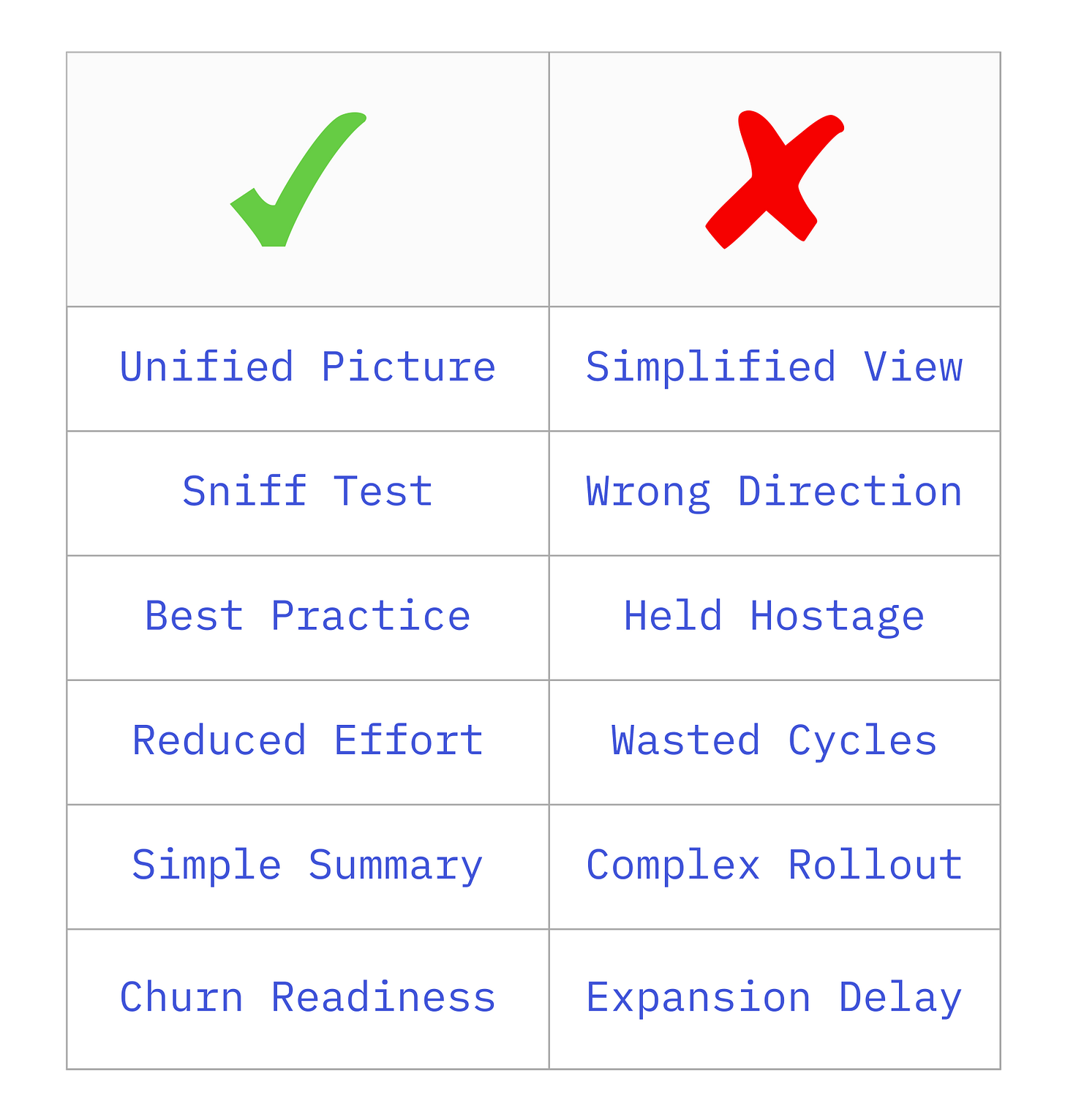Note: today’s post was co-authored by 2 CSM friends (Divya Gupta and Jordan Robinson)
Readers of this newsletter know I’m a big fan of product folks as cross-functional shepherds; over the past few years, as I’ve worked in enterprise SaaS, I’ve learned that CSMs are a great spiritual partner for PMs. The reason for this is because both roles ultimately care about the same thing: customer value. And while they might utilize slightly different lenses (user engagement, account health), they have a shared belief that without customer value, there is only a fast path to churn (both user- and account- wise).
A CSM (or customer success manager) is a critical GTM role, usually rolling up to a C-level leader like a Chief Customer Officer or a Chief Revenue Officer. The roles and responsibilities of the job vary by company, but it usually centers around the successful adoption of the product, with an eye towards renewal (and ideally expansion). The largest enterprises tend to have a named CSM contact, while smaller segments like mid-market may have 1 CSM peanut-buttered across many accounts. In terms of org design, CSMs could be mapped by region in addition to segment. CSMs are definitely in the mix once a deal is signed, but some work during pre-sales with prospects as well in the interest of continuity. Given the plethora of issues that can get in the way of successful adoption (internal champions, organizational maturity, change management, technical expertise), a CSM can end up partnering with everyone from sales engineering to account reps to professional services. But ultimately, CSMs care about customers getting value for their spend, as quickly and with as little effort as possible.
As mentioned earlier, CSMs and PMs are very aligned on how they view the customer. The highest-leverage CSM can be a “trusted advisor” for the customer, while the most-impactful PMs are fluent in “customer voice” - these are 2 sides of the same coin. And both roles are motivated to generate customer impact. I’ve written plenty before about how PM impact can be gauged, but for CSMs, incentive structures can range from carrying expansion quota to churn prevention commission. And as with any incentive structure, agreeing on a unit of measurement is key. While CSMs spend tons of time with customers getting influencer access, building joint success plans, game planning process changes, and running business reviews, there is one artifact that is becoming a standard part of the toolkit: a health scorecard.
But scorecards elicit mixed reactions from the CSM community. Some find them to be an indispensable resource, while others view them as a useless over-simplification. Let’s talk through both points of view.
For those that see scorecards as worthwhile, they are a tool to combine the product and GTM views of the customer lifecycle. A unified picture can highlight where customers are spending cycles and identify the points of leverage. And interesting insights arise when you blend product and account metrics. While proponents acknowledge that scorecards aren’t a silver bullet, they can be handy in validating (or challenging) prevailing sentiment - no framework is perfect, but scorecards can help surface where the model lacks signal. Further, there are function-specific reasons to have scorecards instituted as well - if CSM teams are broken out by market / segment, scorecards are one way to evaluate the performance of a pod (or perhaps the complexity of the customer slice they support). If certain pods’ scorecards skew more healthy, their approach can be distilled into best practices and a playbook for other regions and segments. And finally, there will always be accounts (low revenue / high touch) where operationally it makes sense to use scorecards as a prerequisite to CSM intervention.
But scorecards have drawbacks and detractors as well. For starters, boiling things down to GREEN / RED distorts the complexity on the ground. GREEN is misleading because many accounts tragically go from GREEN to churned with no warning. And RED is unactionable because the reasons are so nuanced and customer-specific. Just the maintenance of the scorecards is an operational burden for someone in the CSM org, not to mention the initial investment to set up and roll out. For those that have been through a scorecard implementation, they’ve seen either models that are too simple to be useful or too complex to comprehend. The approach also feeds the meme that the CSM role is in place for reactive help vs proactive guidance, which incentivizes CSMs to avoid churn vs nurture expansion...but this is counter to how sales teams (a recurring CSM partner) operate, which see an $X expand as orders of magnitude easier than a new $X land. To make matters worse, bad health scores don’t always correlate to churn, so the tool isn’t ideal for its intended purpose. And finally, there’s a bit of Goodhart’s law in play, where CSMs (or their management team) can start managing to the metric, ignoring the reality that true customer success requires a qualitative, account-level, deep dive.
So where does that leave scorecards?
Ultimately, any attempt to understand the customer picture has utility, but like any instrument, if over-used or mis-used, it can be counter-productive. And while there is no substitute for the sentiment of a plugged-in CSM, scaling that level of hands-on engagement across a customer base is costly. The domain of customer health is still nascent, so we’re all looking forward to the toolbox evolving.
We’d love to hear from readers on their experiences with customer success and health scorecards - please chime in via comments👇. And if you enjoyed this post, please consider subscribing.
further reading / references
you can see more content from Divya Gupta and Jordan Robinson on LinkedIn
these posts from the Gainsight blog explain the concept of a scorecard and how to set one up (with some visual examples of what one looks like in practice)
MetaCX is an example of a product that’s trying to enable getting away from health scores and move towards shared success plans that can be tracked at scale
readers know I’m a big fan of PMs collaborating cross-functionally, and interlocking with CSMs is a great way to identify customer experience loops
if not rolled out thoughtfully, product adoption and account health, like any measure, can suffer from metrics malfunction and end up as south star metrics
childish drawing / interpretation





